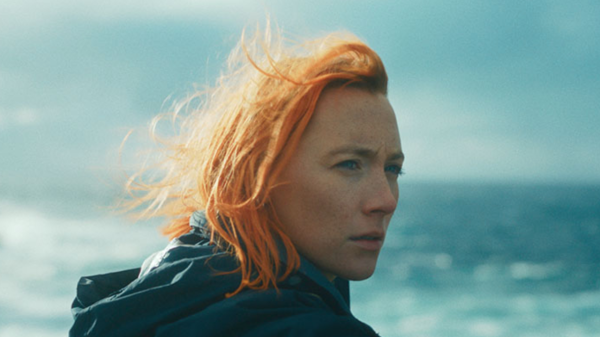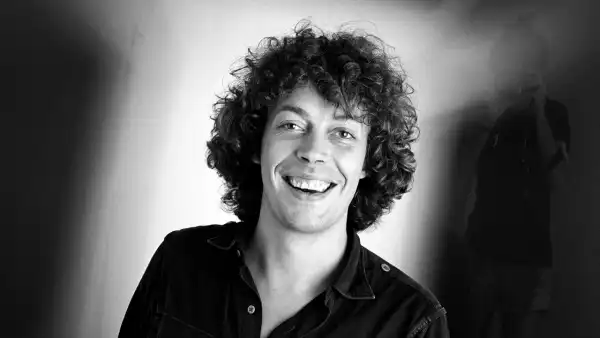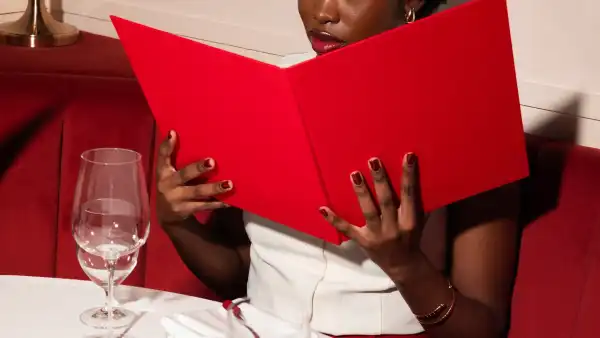
Save this storySave this storySave this storySave this story
Just about every aspect of “The Outrun” feels synthetic except for the sincerity that all of its prime collaborators put into it. An adaptation of Amy Liptrot’s 2016 memoir of the same name, it is directed by Nora Fingscheidt and stars Saoirse Ronan as Rona, a twenty-nine-year-old biology graduate student who is struggling with alcoholism. She’s living in London, but when she hits bottom she goes to rehab and then moves back to where she grew up—the Orkney Islands, off the coast of Scotland, where she faces fraught family dynamics. Her father is bipolar, and his increasing needs and demands trouble Rona. Her mother is a devout Christian whose relentless proselytizing has long oppressed and angered her. While working to remain sober and confronting the memories of her years of alcohol abuse, she absorbs herself in the natural splendors of the region, takes a house on a remote island, rekindles her interest in scientific research, and rebuilds her life.
The movie tells an admirable and moving story about a woman overcoming her troubles, but it arouses no aesthetic interest, no sense of discovery in real time, no sense of creative risk. The earnest gravity of the telling gets in the way of anything that resembles artistic freedom, and the gap between the emotional input of the story and the emotional output of the movie is surprisingly, dismayingly large. This sense of constraint is at odds with the bold dramatic form that Liptrot and Fingscheidt, who collaborated on the script, develop. (They wrote the story with Daisy Lewis.) The movie begins by leaping ahead in time, from Rona’s childhood in Orkney to her time as a student in London to her return to her home town. Once Rona gets back to Orkney, a few minutes in, the film adopts the form of a memory piece, as Rona is haunted by her past and triggered to remember.
In flashbacks to London, Rona is seen partying hard, dancing to loud music, drinking whatever she can get her hands on, vomiting in a bar toilet, getting thrown out of a bar, crawling on a sidewalk late at night, getting bloodied on broken glass. She has a boyfriend there, Daynin (Paapa Essiedu), but her alcohol abuse puts stress on the relationship. She attends A.A. sessions, though they’re depicted perfunctorily, just enough to signify that she participated. Rona’s childhood is likewise seen just a bit, in sequences of her scavenging at the shore, or observing her father, Andrew (Stephen Dillane), having a breakdown. (Young Rona is played by Freya Lexie Evans.) The many incidents of Rona’s life in the past and present show sparks of strong feeling and authentic experience, but Fingscheidt abandons them so rapidly, cutting from one scene to another, that the film feels strangely and misguidedly rushed. The parade of memories seems to be illustrating predetermined themes rather than reflecting the protagonist’s mind in motion.
Actions depicted with palpable enthusiasm and interest are reduced to fragments, devoid of patient observation or authentic curiosity. For instance, when Rona takes a job with the Royal Society for the Protection of Birds to monitor one species on the island of Papa Westray, she’s given a brief orientation by her supervisor, then—poof!—it’s nighttime and Rona is in a car, making her required report. Later, at the shore, she walks barefoot on rocks, runs on rocks, sits on rocks; through a window at home, she’s seen sitting and writing for a few seconds, then is sitting at a desk reading an oceanographical article on her computer when she gets a disturbing call from her father and hangs up on him—inconsequentially. Just as scenes of physical activities merely signify that such things happened, with neither outer nor inner specificity, so the movie’s conversations are never brought to fruition, never wander into unusual and revealing territory, suggest no interpersonal connection but merely deliver information. As a result, the story unfolds like storyboard illustrations of one-line descriptions in a screenplay. The grand wild locales of the Scottish coast are reduced to mere backdrops.
To quickly dispense emotions along with events, Fingscheidt relies on a camera style of facile analogy. When Rona dances, the camera gyrates with her; when she’s pensive, it sits pensively beside her; when she pretends, at the window of her house, to steer a ship, the image tilts from side to side like a vessel; and when she’s having something like a panic attack in her desperate need for a drink, the camera whirls disorientingly around her. More grievously, the movie’s narrowness and impatience inhibit the performance of its formidably talented lead actress. In dephysicalizing the action, rendering it merely indicative, the movie offers Ronan little chance to develop her character’s emotional life over time. Her expressions are static, literalized, pasted to the screen like decals, and her vocal delivery is subjected to a similar oversimplification. To indicate that Rona has something of an intellectual life and a poetic inclination, the soundtrack offers clips of her discoursing, briefly, on matters of science and folklore, which often sound written for a children’s encyclopedia and which Ronan delivers in an educational tone. Rona’s life is deprived of its practicalities, of money and paperwork. It’s also deprived of certain notable agonies; for instance, at times she yields to an irresistible craving for alcohol by resorting to bottles hidden where a visitor would never look—yet the work needed to hide them there is never seen. The writer’s habits—both the physical life and the moral dedication that it implies—are likewise ignored.
There is an extraordinary article by Liptrot, in the Guardian, about her book’s genesis. She goes into richly evocative detail regarding where and when she wrote it and where the necessary funds came from, and she describes keeping a formative blog during the “radical self-exploration” of rehab and writing articles, while living on Orkney, for a nature-centered Web site. She cites the crucial importance of her childhood diaries to her literary vocation as well as her ongoing online correspondence with London friends while on the islands. Above all, she emphasizes that “the writing process was happening at the same time as many of the events I describe in the book and has been as important in my recovery and sobriety as the sea swimming, birdwatching or the 12-step programme.” The movie of “The Outrun” in no way suggests a person for whom writing—with the thought and the organization that go into it—matters much; the film is about someone who could never have written such a book at all. ♦
Sourse: newyorker.com






